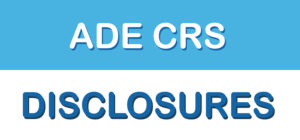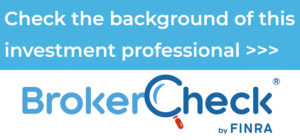Am I Having Enough Withheld?
Form W-4 helps you determine the proper withholding amount
Two factors determine the amount of income tax that your employer withholds from your regular pay: the amount you earn and the information you provide on Form W-4. This form asks you for three pieces of information:
- The number of withholding allowances you want to claim: You can claim up to the maximum number you’re entitled to, claim less than you’re entitled to, or claim zero.
- Whether you want taxes to be withheld at the single, married, or married with tax withheld at single rate: The married status, which is associated with a lower withholding rate, should generally be selected only by those taxpayers who are married and file a joint return. Those who are married and file separately should select married with tax withheld at single rate.
- The additional amount (if any) you want withheld from your paycheck: This is optional; you can specify any additional amount of money you want withheld.
When both spouses work and have taxes withheld at the married rate, they sometimes end up with insufficient taxes withheld. If this happens to you, remember that you can always choose to withhold at the single rate. In addition, you can determine the proper withholding amount by completing Form W-4’s two-earner/two-job worksheet.
Complete the worksheets to claim the correct number of allowances
To understand Form W-4, you must understand allowances. Think of allowances as cash in your pocket at the time that you receive your paycheck. The more allowances you claim, the less taxes are taken from your paycheck (and the more cash ends up in your pocket on payday). For example, you can maximize the amount withheld from your paycheck to ensure that you have enough tax withheld to cover your tax liability by claiming zero allowances. This will reduce the amount of cash you take home in your paycheck. The following factors determine your number of allowances:
- The number of jobs that you work
- The deductions, adjustments to income, and credits that you expect to take during the year
- Your filing status
- Whether your spouse works
To claim the correct number of allowances, you should complete Form W-4’s worksheets. These include a personal allowances worksheet, a deductions and adjustments worksheet, and a two-earner/two-job worksheet. IRS Publication 505 (Tax Withholding and Estimated Tax) explains these worksheets.
Check your withholding
To avoid surprises at tax time, it’s a good idea to periodically check your withholding. If you accurately complete all Form W-4 worksheets and don’t have significant nonwage income (e.g., interest and dividends), it’s likely that your employer will withhold an amount close to the tax you’ll owe on your return. But in the following cases, accurate completion of the Form W-4 worksheets alone won’t guarantee that you’ll have the correct amount of tax withheld:
- When you’re married and both spouses work, or if either of you start or stop working
- When you or your spouse are working more than one job
- When you have significant nonwage income, such as interest, dividends, alimony, unemployment compensation, or self-employment income, or the amount of your nonwage income changes
- When you’ll owe other taxes on your return, such as self-employment tax or household employment tax
- When you have a lifestyle change (e.g., marriage, divorce, birth or adoption of a child, new home, retirement) that affects the tax deductions or credits you may claim
- When there are tax law changes that affect the amount of tax you’ll owe
In these cases, IRS Publication 505 can help you compare the total tax that you’ll withhold for the year with the tax that you expect to owe on your return. It can also help you determine any additional amount you may need to withhold from each paycheck to avoid owing taxes when you file your return. Alternatively, it may help you identify if you’re having too much tax withheld. If you find that you need to make changes to your withholding, you can do so at any time simply by submitting a new Form W-4 to your employer.
Thanks for checking out the blog!
This material is for general information only and is not intended to provide specific advice or recommendations for any individual. There is no assurance that the views or strategies discussed are suitable for all investors or will yield positive outcomes. CDs are FDIC Insured to specific limits and offer a fixed rate of return if held to maturity, whereas investing in securities is subject to market risk including loss of principal. This material was prepared by LPL Financial.
The opinions voiced in this material are for general information only and are not intended to provide specific advice or recommendations for any individual. To determine which investment(s) may be appropriate for you, consult your financial advisor prior to investing. All performance referenced is historical and is no guarantee of future results. All indices are unmanaged and cannot be invested into directly.
The information provided is not intended to be a substitute for specific individualized tax planning or legal advice. We suggest that you consult with a qualified tax or legal advisor.
LPL Financial Representatives offer access to Trust Services through The Private Trust Company N.A., an affiliate of LPL Financial.
Gregory Armstrong is a Registered Representative with and Securities are offered through LPL Financial, member FINRA/SIPC Investment advice offered through ADE, LLC, a registered investment advisor. Armstrong Dixon and ADE, LLC are separate entities from LPL Financial.
This communication is strictly intended for individuals residing in the state(s) of CO, DE, DC, FL, MD, MO, NY, NC, OR, PA, VA and WV. No offers may be made or accepted from any resident outside the specific states referenced.
Securities and insurance offered through LPL or its affiliates are: 









